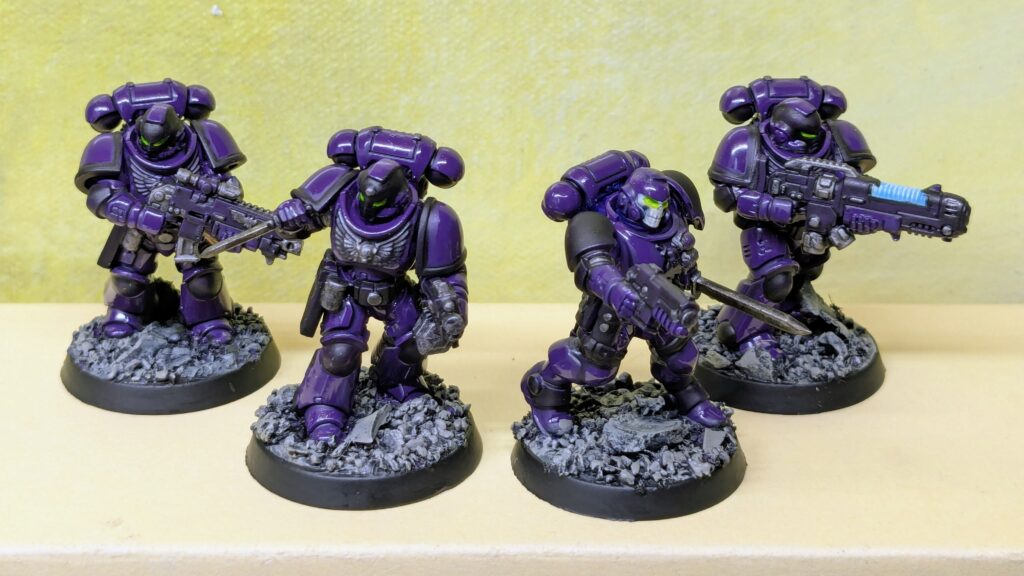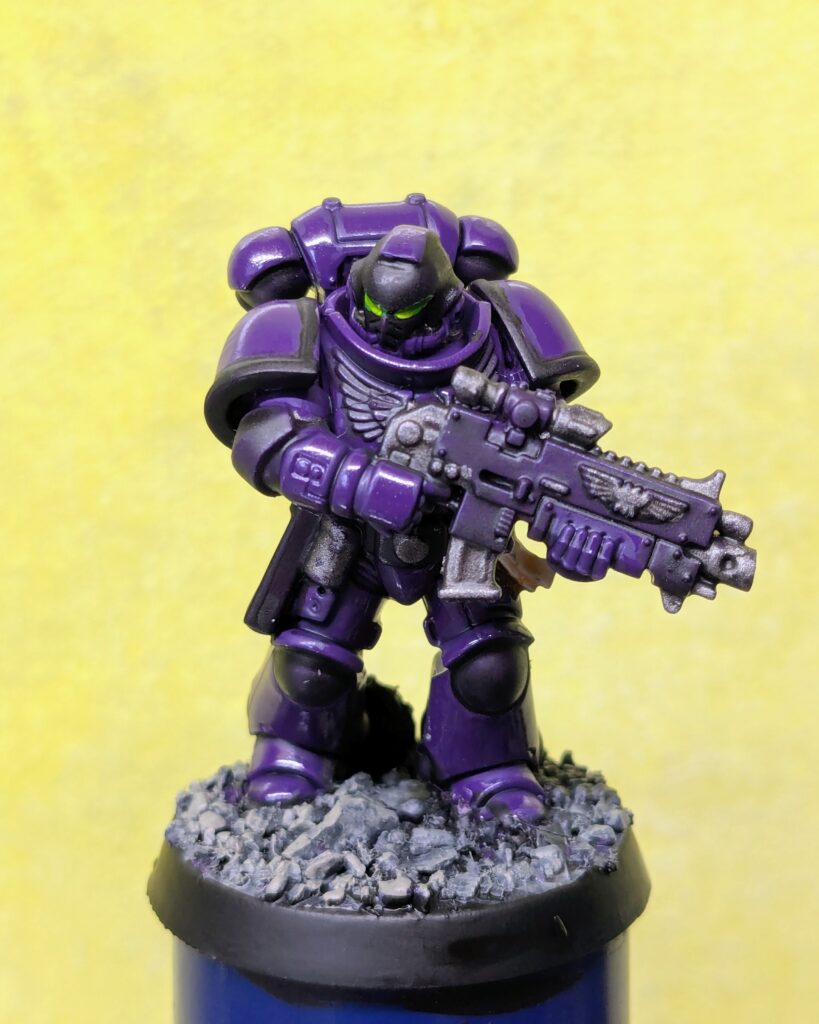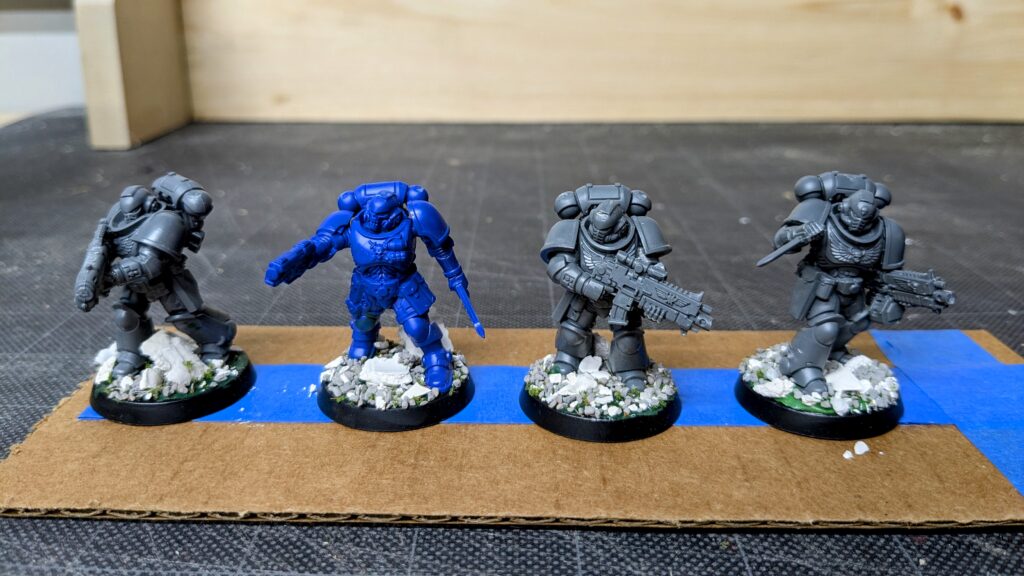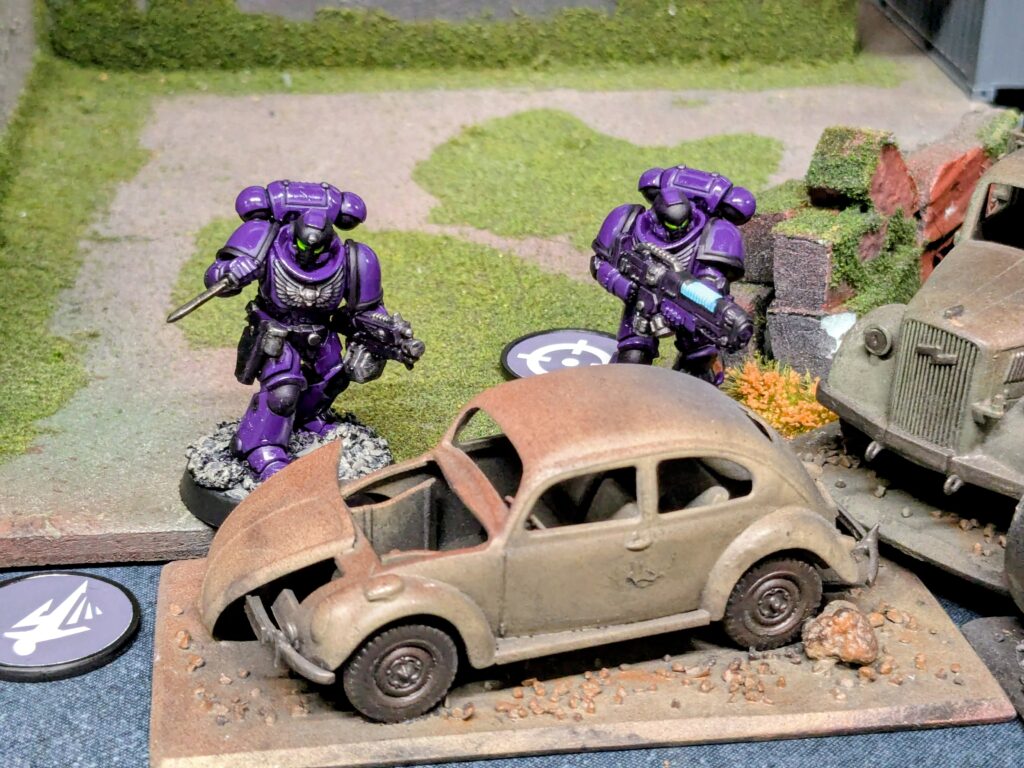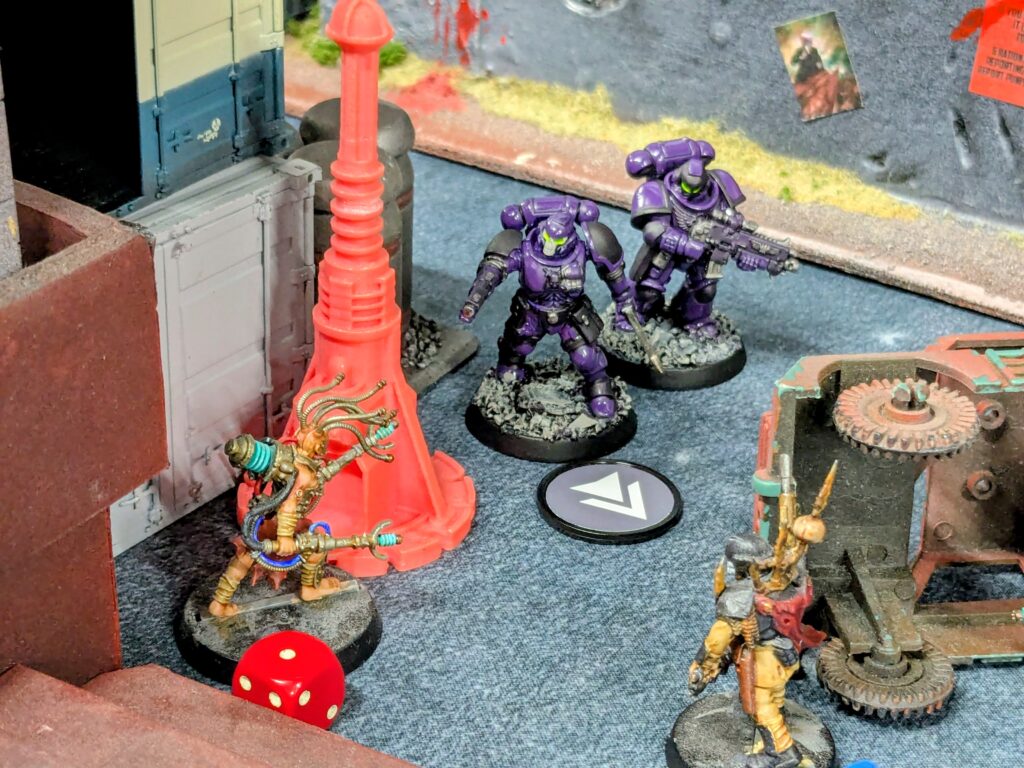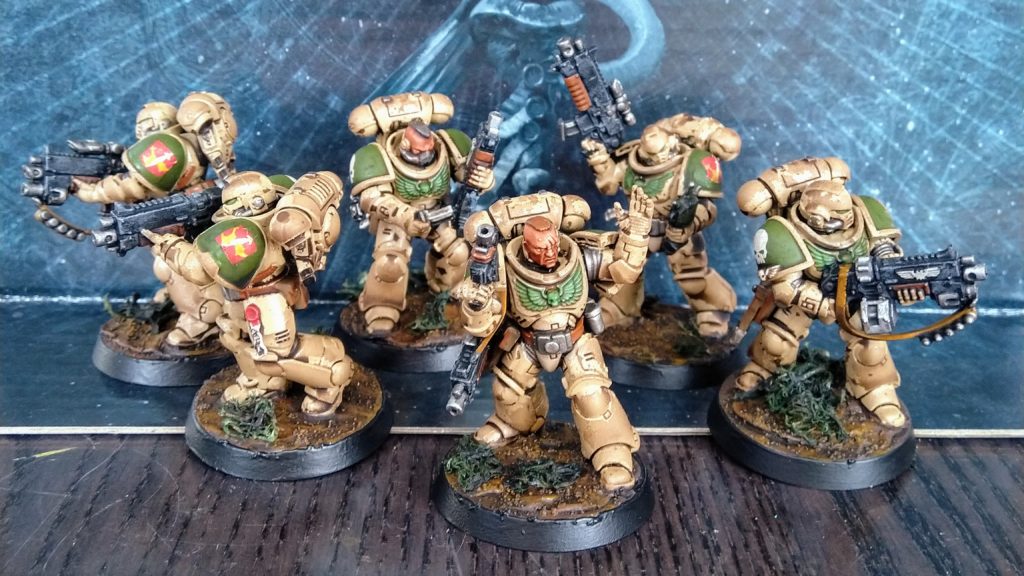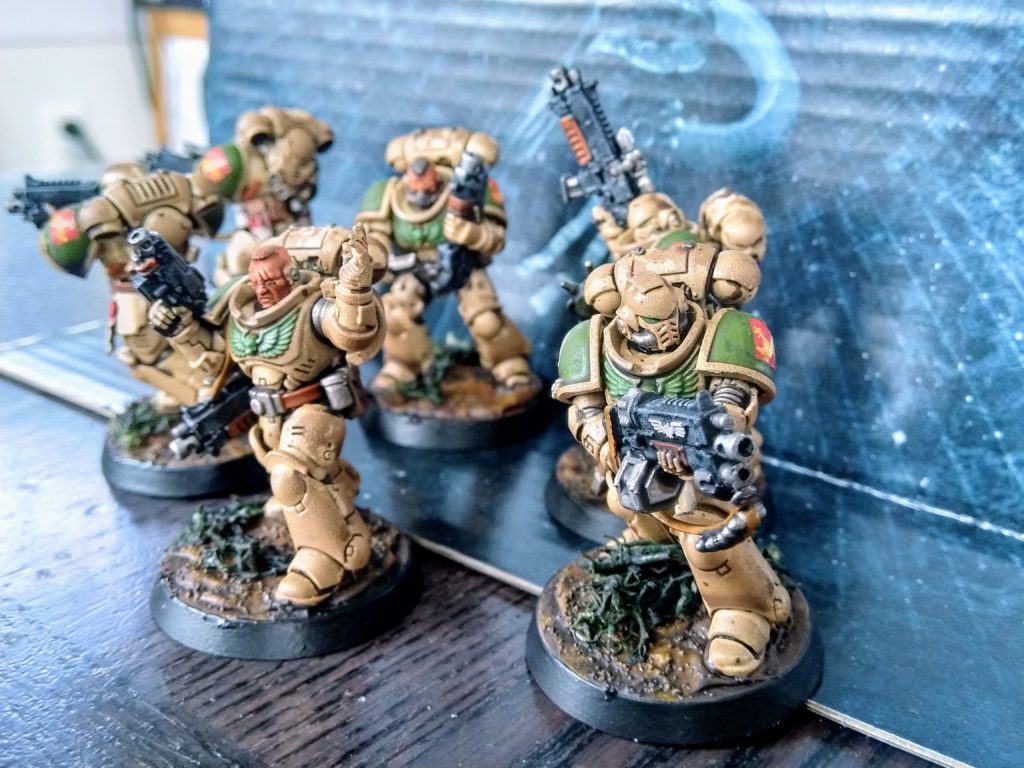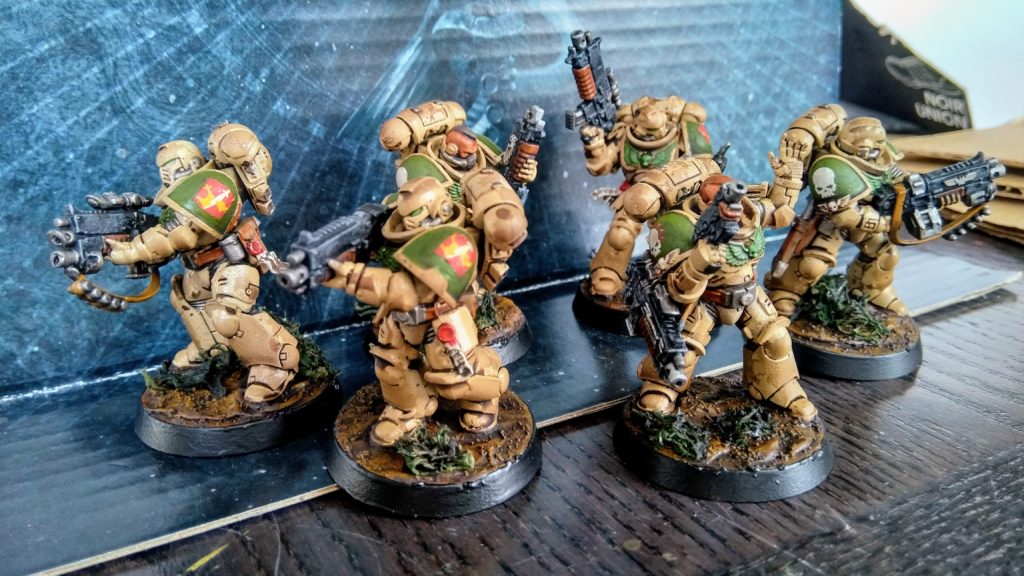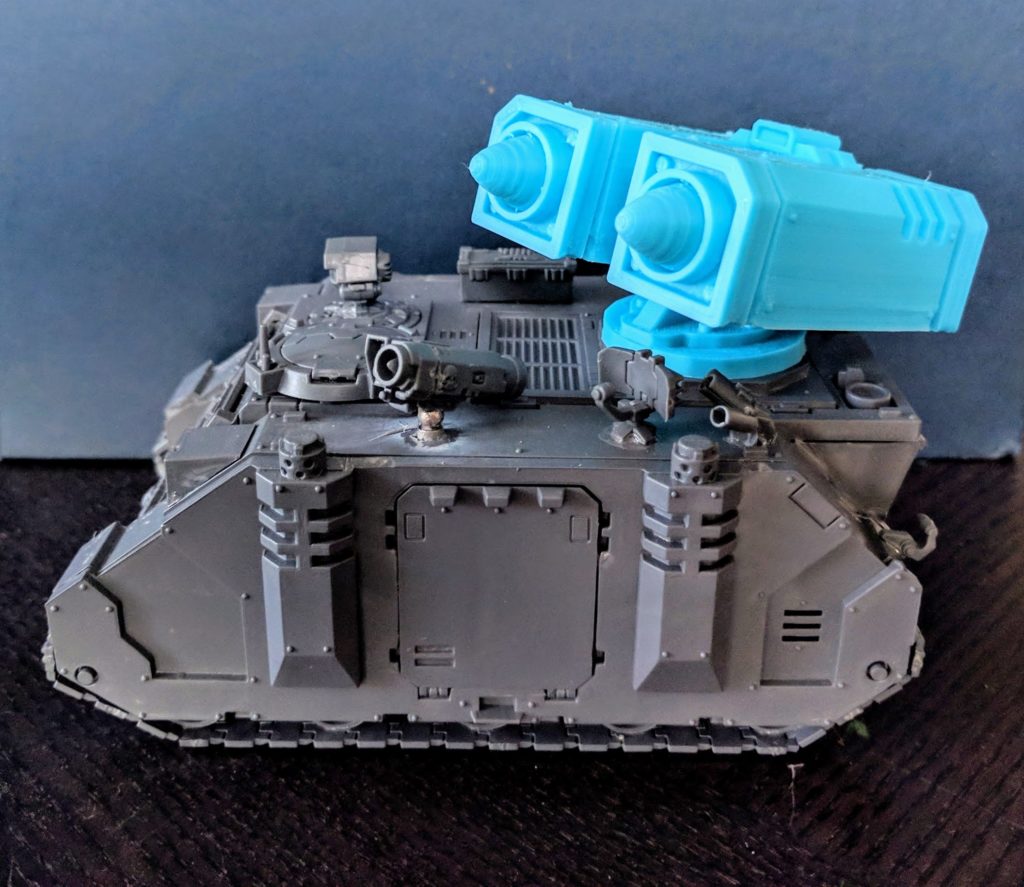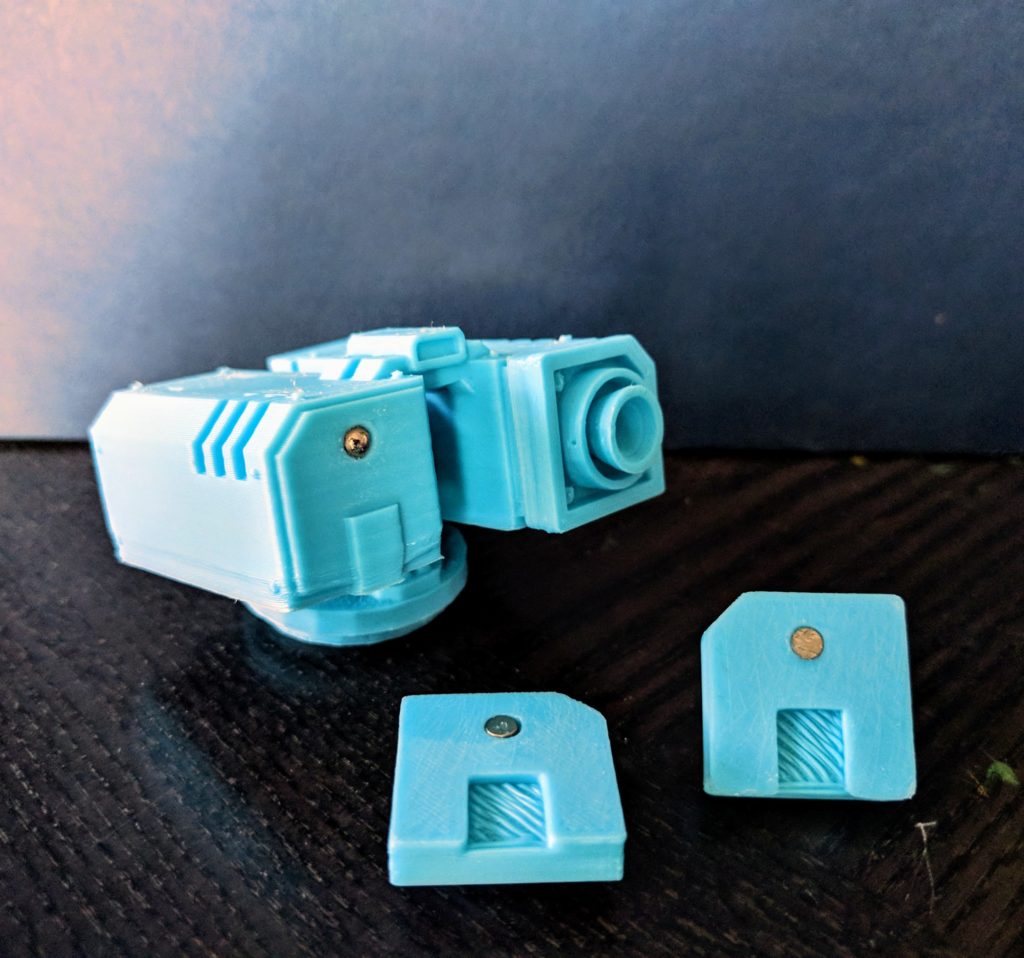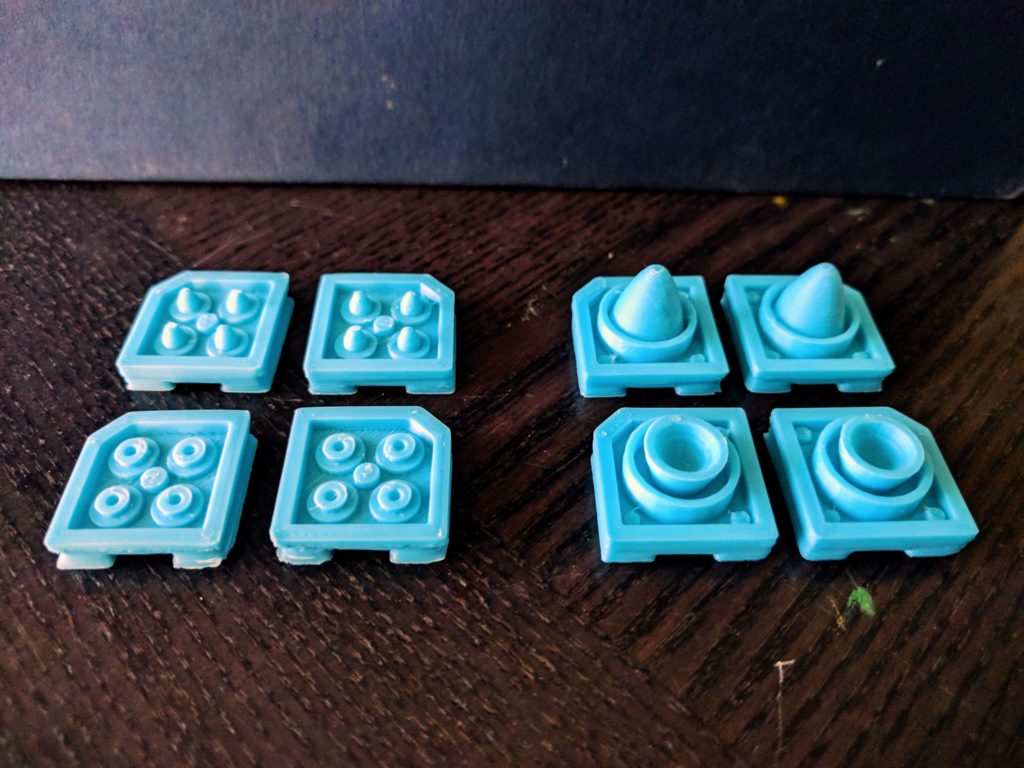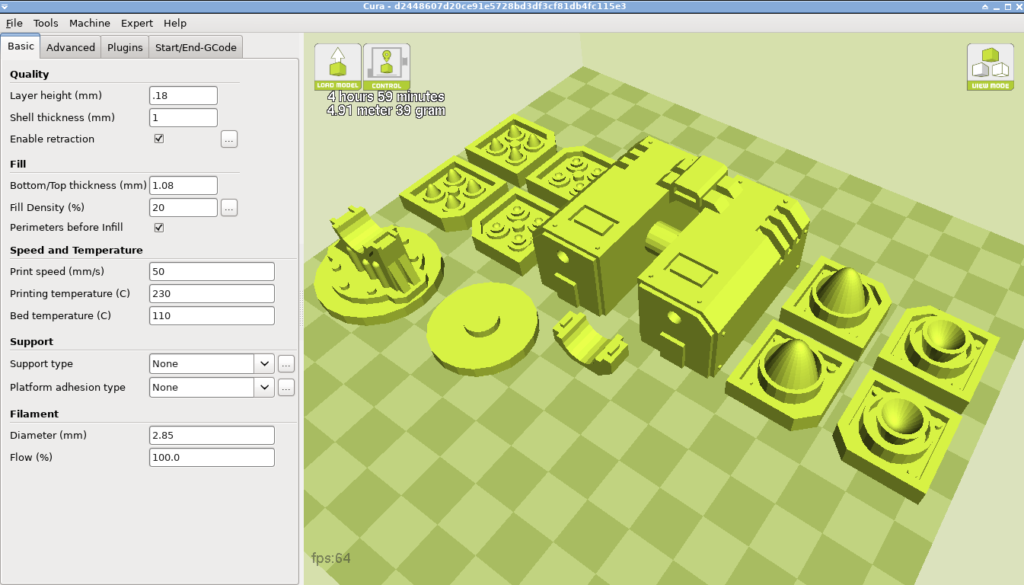I painted some Space Marines for the first time in at least 7 years…
So far the new purple chapter has a Reiver for a sergeant, Hellblaster as a special weapon, and two Intercessors, our scifi game du jour requiring only four Marines to form a squad. These models were assembled years ago, relics from Games Workshop’s initial launch of the Primaris upscaled Space Marines. One of the big challenges way back then was that for a long while these unit types were all that were available, which was unsatisfying from a modeling perspective and difficult to make work on the tabletop compared to the exhaustive options available in classic Space Marines.
Anyway, in anticipation of a game yesterday I did the basing on Wednesday and then spray primed+base coated. Then I painted them yesterday off and on throughout the course of the day—BETWEEN telecons and definitely not DURING telecons, no… The look is purposefully simplistic and cartoonish, to me evoking Skeletor and Shockwave, partly for speed and partly for style. Most of my models both intentionally and unintentionally have a very dirty, muddy aesthetic, so I enjoy these squeaky clean guys running around the grim dark.
The models are all monopose. Since I only have five Hellblasters and no Hellblaster Sergeant I know they’re from one of the many get-started boxes that came out with the debut of the Primaris. Ditto the blue plastic Reiver and presumably the other guys.
The simple rubble basing is a mix of medium modeling gravel and plaster chunks. I have a little jar into which I sweep “dirty” leftovers from various basing projects. Over the years it’s accumulated a nice mix of granule sizes with just a hint of other interesting debris.
The painting recipe is straightforward and oriented to speed painting—
- Prep
- Spray prime and base coat in one go with a Krylon high gloss purple
- Main
- Every crevice and edge: Drakenhof Nightshade Shade
- Common Details
- Pouches, belts, helmets, some armor components: Shyish Purple Contrast
- Gun bodies and chest plates: Basilicanum Grey Contrast then drybrushed Stormhost Silver Layer
- Grenades, vents, tubing, gun barrels & mags: Leadbelcher Base then Nuln Oil Shade
- Combat knives: Black Legion Contrast then drybrush Leadbelcher Base then drybrush Stormhost Silver Layer then thin coat Ratling Grime Contrast
- Eyes: Stormhost Silver Layer then Tesseract Glow Technical, careful to keep the latter a bit light and stroking up and back, pulling the green to reveal the hint of yellow toward the bottom front
- Rare Details
- Purity Seal: Wraithbone Base and Vallejo Dark Red then Seraphim Sepia Shade
- Reiver face: Wraithbone Base then Apothecary White Contrast
- Plasma Coil: Pylar Glacier Contrast, taking care to wipe away the top center a bit and leaving more to settle around the bottom edge
- Base
- Rubble: Black Legion Contrast then drybrushed Skavenblight Dinge Layer then drybrushed P3 Cryx Bane Highlight
- Rim: Black Legion Contrast
The big “trick” here is priming with a (cheap) high gloss spray paint. It’s a little thick here so there’s maybe some loss of detail, but I’m speed painting to tabletop standard anyway. In a few places, like the Reiver’s face and a Purity Seal one of them has, a base coat is required to enable lighter colors. But the others are going directly on the purple. Contrast paint on that surface is interesting. On the one hand it takes some care because it goes everywhere easily so you have to watch your loading and to not disturb the model until it sets. But on the other hand it wipes right off so you can eliminate mistakes right away. The ease with which it spreads also promotes a smooth, even look suitable for power armor and similar large smooth surfaces. A similar procedural effect can be achieved by gloss coating a base coated model. Here I’m going for the very shiny look that the glossy spray prime has, but it could be knocked down with a matte coat afterward.
A simple palette and the color choices then work with that underlying purple to create a nice unified look. Shyish Purple is very opaque for Contrast paint that produces a really nice deep near-black with a hint of purple. With the purple base here it’s softened a bit and works better visually than a more pure black. The Basilicanum Gray over the purple base functions like a very heavy shade, leaving the gun much darker and more matte than the body but still overtly purple. Line shading and edging with the deep blue Drakenhof Nightshade also stays within the purple palette to effect subtle but visible deep blue shadows.
I have not varnished these models and don’t plan to. They’re not especially prone to chipping as they’re plastic, and I like the existing deep shine of the armor interspersed with the more matte guns and pouches.
All in all, a squad of Marines delivered just in time for Friday’s skirmish, and the shiny deep purple look photographs really well on the tabletop.
